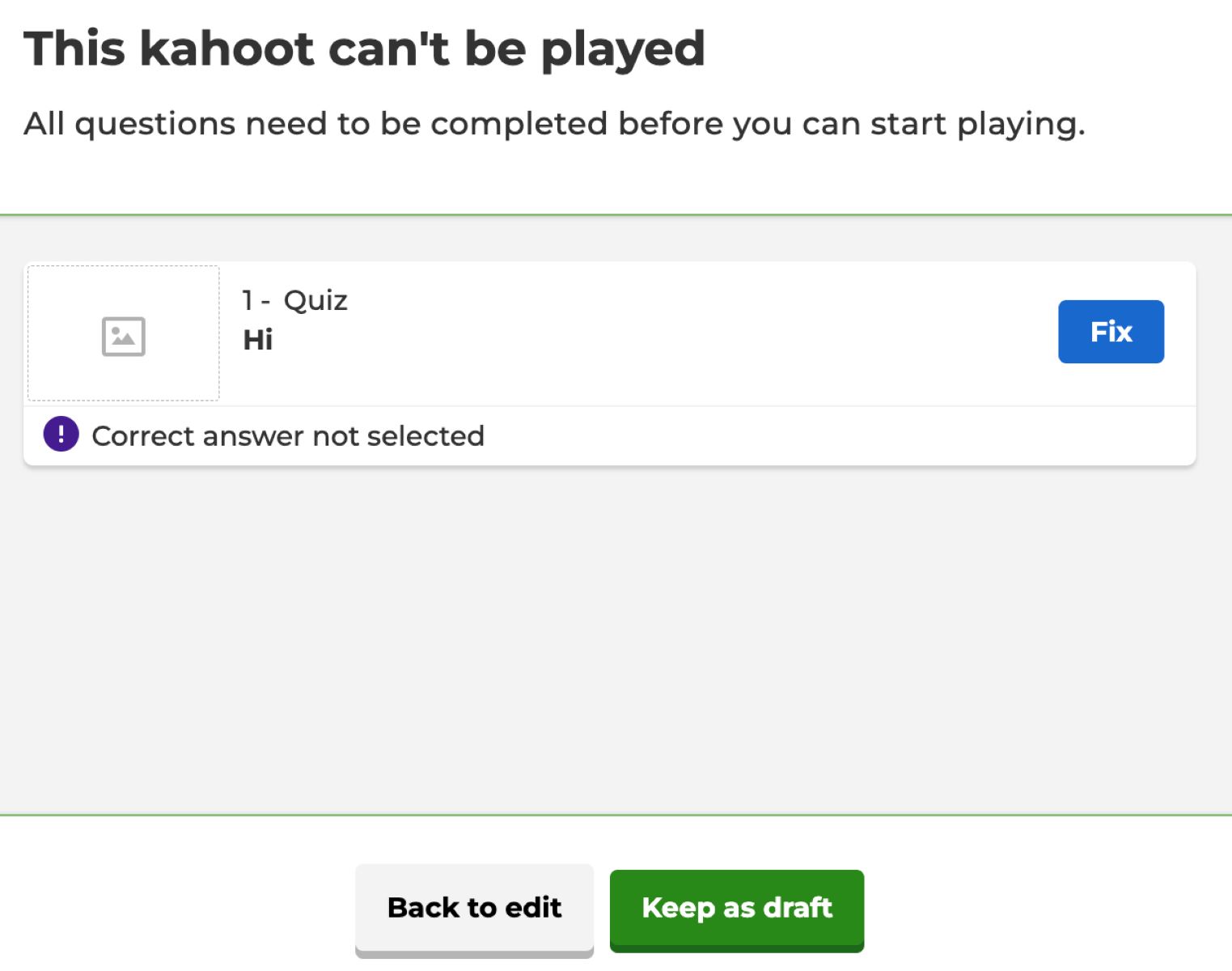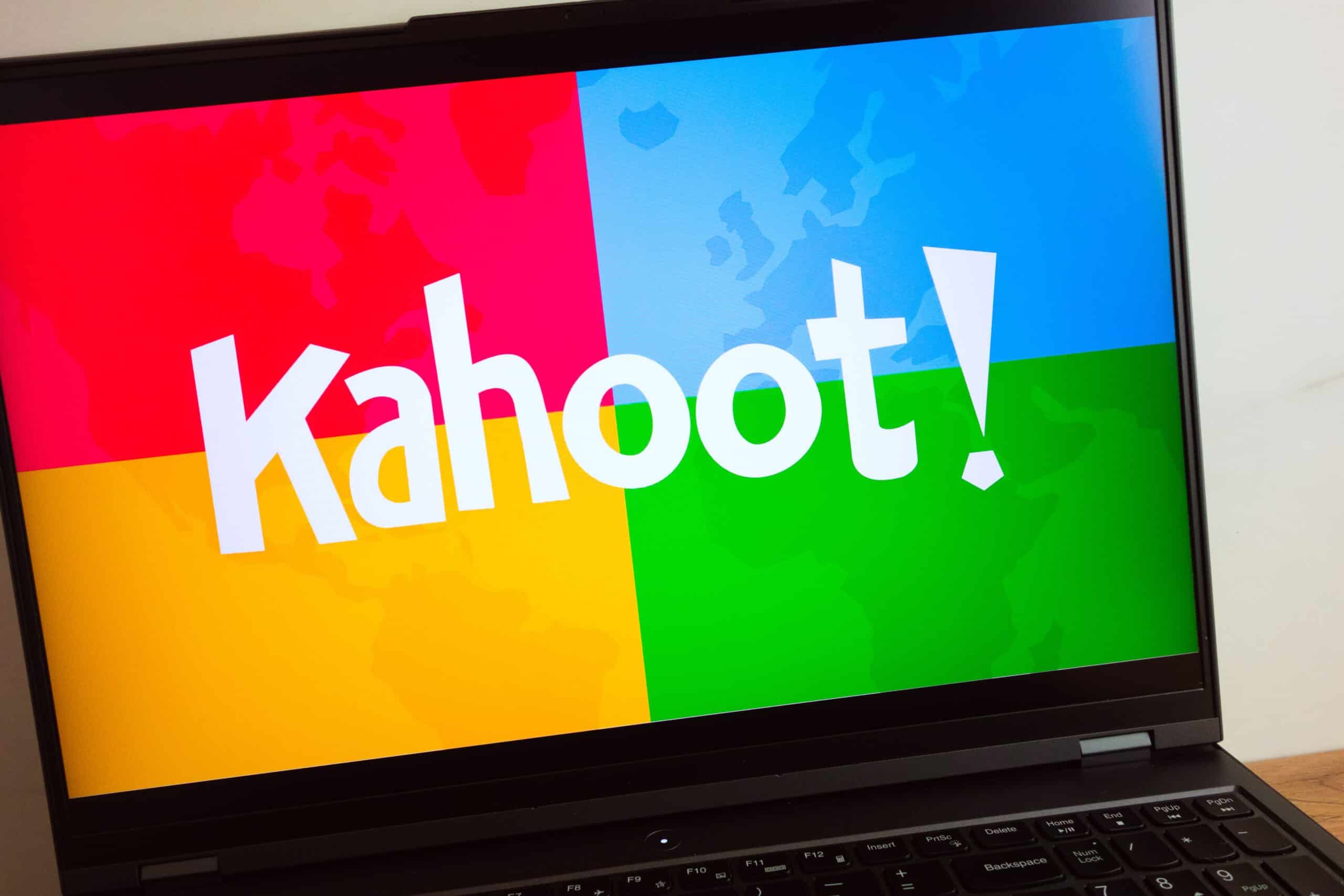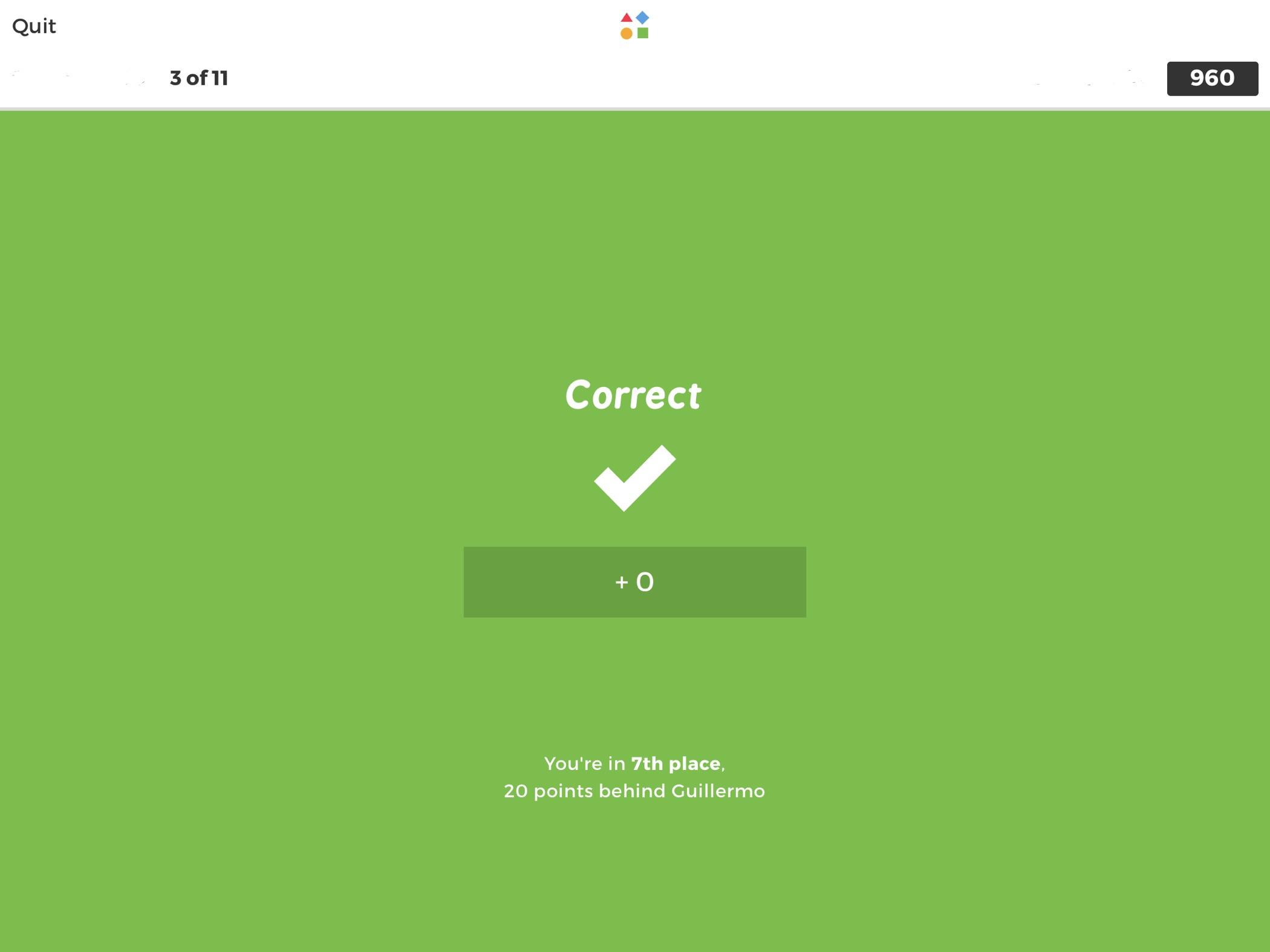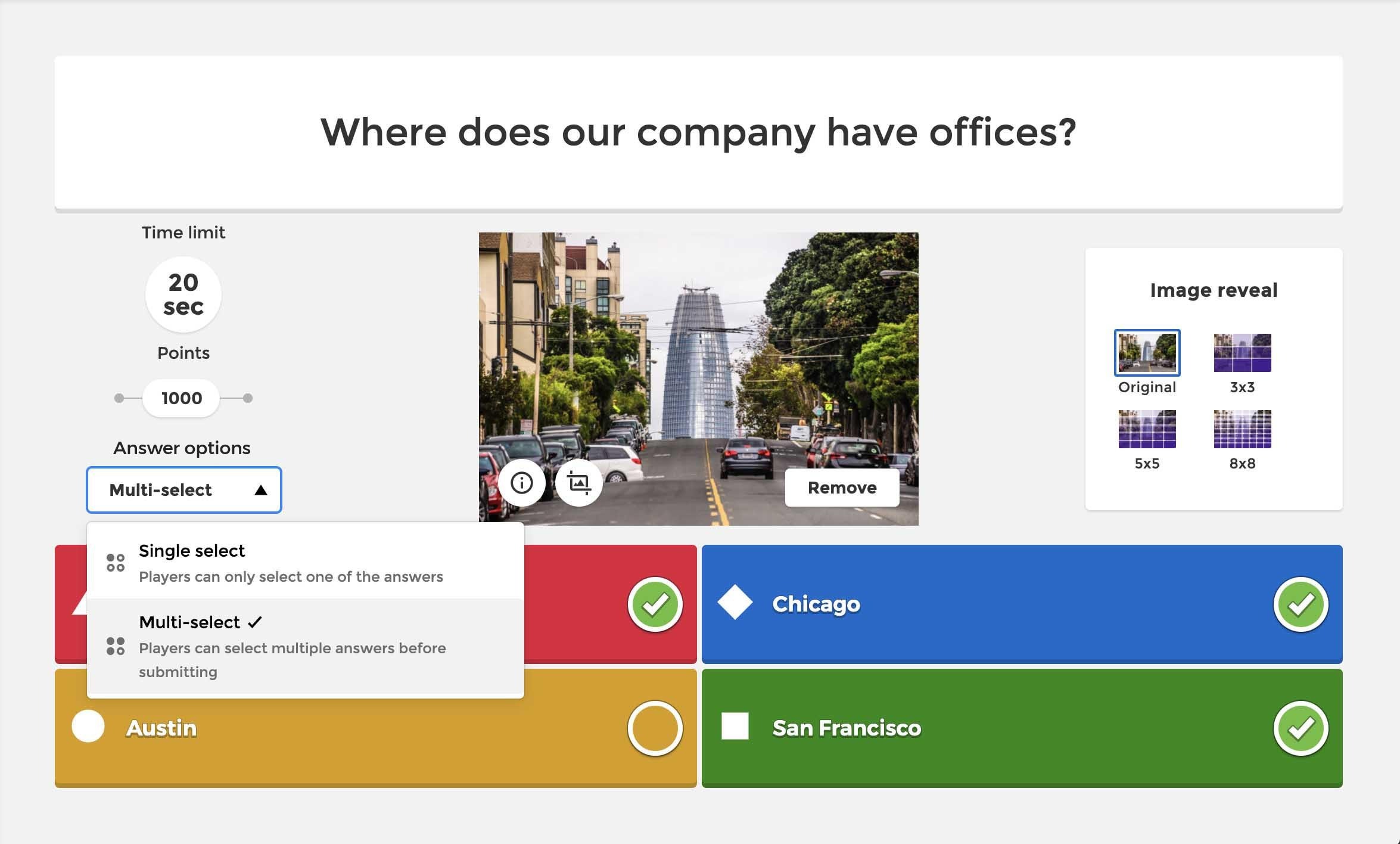Introduction
Kahoot is a popular online learning platform that has gained immense success in the EdTech industry. Launched in 2013, Kahoot offers a unique and engaging learning experience through interactive quizzes, games, and assessments. It has revolutionized the way educators and learners interact, making education more interactive and collaborative.
Kahoot’s approach to learning has attracted millions of users worldwide, including students, teachers, and corporate trainers. The platform’s user-friendly interface, vast library of customizable content, and gamified learning approach have made it a favorite among educators across various disciplines.
With its growing user base and innovative features, it’s no wonder that Kahoot has become a major player in the EdTech market. However, one question that often arises is how much money Kahoot actually makes. In this article, we will explore Kahoot’s revenue sources and investigate how much money they generate through subscriptions, advertising, and corporate sales.
By understanding Kahoot’s revenue model, we can gain insights into the company’s financial stability and future prospects. Additionally, we will explore the factors that influence Kahoot’s revenue and analyze the competitive landscape of the EdTech industry.
So, let’s dive into the numbers and discover how much money Kahoot makes and the factors that contribute to its success.
Overview of Kahoot
Kahoot is an innovative EdTech platform that has transformed traditional learning methods by incorporating gamification and interactivity. The platform allows educators to create, share, and play learning games, quizzes, and surveys, turning education into an engaging and enjoyable experience.
Since its launch in 2013, Kahoot has experienced exponential growth and has amassed a global user base of over 1 billion players. The platform offers a wide range of subjects and topics, making it suitable for all age groups and educational levels. Whether it’s a kindergarten student learning math or a corporate professional seeking training on leadership skills, Kahoot has engaging content tailored to everyone’s needs.
What sets Kahoot apart from other learning platforms is its emphasis on interactivity. Players can participate in quizzes and games using their smartphones, tablets, or computers, making learning a collaborative experience. This not only enhances engagement but also promotes critical thinking, problem-solving, and teamwork.
Another remarkable feature of Kahoot is its vast library of user-generated content. Educators and students can create and share their own quizzes and games, fostering a sense of community and collaboration among users. This crowd-sourced content ensures a constant supply of fresh and relevant learning resources.
Kahoot’s popularity in educational institutions is evident from its widespread adoption by teachers. The platform is used in classrooms around the world to facilitate formative assessments, gauge student understanding, and make learning more interactive. Kahoot’s seamless integration with learning management systems like Google Classroom and Microsoft Teams further enhances its usability and accessibility for both educators and students.
In addition to educational institutions, Kahoot has also made significant strides in the corporate training sector. Many companies integrate Kahoot into their training programs to engage employees, reinforce learning, and evaluate their knowledge and skills. This has opened up a new revenue stream for Kahoot, as corporate sales contribute to its overall revenue.
Overall, Kahoot has revolutionized the way we approach learning and has become a household name in the EdTech industry. Its gamified learning approach, interactivity, and expansive library of content have made it a favored choice among educators and learners worldwide.
Kahoot’s Revenue Sources
Kahoot generates revenue through various channels, including subscriptions, advertising, and corporate sales. Let’s delve into each of these revenue sources:
1. Subscriptions: Kahoot offers a freemium model, where users can access basic features for free. However, to unlock advanced features and access a wider range of content, users have the option to subscribe to Kahoot Plus or Kahoot Pro. These premium plans provide additional benefits such as branding customization, detailed analytics, and the ability to collaborate with other educators. The subscription fees contribute significantly to Kahoot’s revenue stream.
2. Advertising: Kahoot has successfully capitalized on its large user base by incorporating advertising into its free offerings. The platform displays targeted ads between games and quizzes, allowing advertisers to reach a highly engaged audience. By partnering with brands and advertisers, Kahoot generates revenue through these advertising placements. Additionally, Kahoot also offers sponsored content, allowing companies to create interactive educational experiences for learners while generating advertising revenue.
3. Corporate Sales: Kahoot has tapped into the corporate training market by offering tailored solutions for organizations. Companies can purchase Kahoot for business plans, which provide features specifically designed for corporate training, such as advanced analytics and collaboration tools. This segment of Kahoot’s revenue is driven by licensing deals and subscriptions from businesses that benefit from the platform’s interactive learning capabilities.
These revenue sources have propelled Kahoot’s financial success and have allowed the company to invest in enhancing its platform and expanding its user base. With a dedicated focus on both education and corporate sectors, Kahoot has effectively diversified its revenue streams.
It’s worth noting that while subscriptions, advertising, and corporate sales are the primary revenue sources for Kahoot, the company also explores partnerships and collaborations with educational publishers and content creators. These collaborations result in content partnerships, shared revenue models, and licensing agreements, further contributing to Kahoot’s overall earnings.
Overall, Kahoot’s revenue model demonstrates its ability to monetize its platform while providing valuable learning experiences to users. This multi-faceted approach ensures that Kahoot remains financially stable and continues to innovate and evolve in the ever-growing EdTech market.
How Much Money Does Kahoot Make from Subscriptions?
Kahoot’s subscription-based revenue model has proved to be a successful source of income for the company. The subscription plans, namely Kahoot Plus and Kahoot Pro, offer enhanced features and customization options that cater to the needs of educators and corporate trainers.
The exact amount of money that Kahoot makes from subscriptions can vary, as it depends on the number of users who opt for the premium plans. However, according to Kahoot’s financial reports, subscriptions accounted for a significant portion of the company’s revenue in recent years.
The pricing structure for Kahoot Plus and Kahoot Pro is flexible, allowing users to choose the plan that best suits their requirements. Educators and individuals can subscribe on a monthly or annual basis. By offering different options, Kahoot aims to cater to a wide range of users while maximizing its subscription revenue.
Subscription revenue is driven by several factors, including the number of users who choose to upgrade, the duration of their subscription, and the average revenue per user (ARPU). The ARPU can vary depending on factors such as geographical location and the demographic of the user base.
To entice users to upgrade, Kahoot Plus and Kahoot Pro offer additional benefits like the ability to upload their own logo and branding, access to advanced analytics, and the ability to collaborate with other educators. These value-added features make the premium plans appealing to users and encourage them to sign up for a subscription.
Kahoot Plus and Kahoot Pro are used by educators in various education sectors, from K-12 schools to higher education institutions. The affordability and functionality of these plans make them popular choices for teachers who want to enhance their teaching methods and engage their students in new and interactive ways.
While the exact revenue figures from subscriptions are not publicly disclosed by Kahoot, their financial reports indicate a steady growth in this revenue stream over the years. The continued success of the subscription model demonstrates the value that users find in the additional features and benefits provided by the premium plans.
As Kahoot continues to expand its user base and improve its offerings, it is expected that subscription revenue will remain a reliable and significant source of income. With the increasing demand for interactive and gamified learning experiences, Kahoot’s subscription plans are likely to continue driving the company’s growth and financial success in the EdTech market.
How Much Money Does Kahoot Make from Advertising?
Kahoot’s advertising revenue is an important component of its overall income. The platform offers various advertising opportunities for brands and advertisers to reach its vast user base of over 1 billion players worldwide.
Kahoot’s advertising model involves showing targeted ads to users during gameplay and quizzes. These ads are strategically placed and designed to complement the learning experience, ensuring that they do not disrupt the user’s engagement. By incorporating advertising in a non-intrusive manner, Kahoot creates a win-win situation for both advertisers and users.
The exact amount of money that Kahoot generates from advertising can vary depending on factors such as the number of ads served, the ad formats used, and the pricing model adopted. While specific revenue figures are not publicly disclosed, it is evident that advertising contributes significantly to Kahoot’s overall revenue stream.
Kahoot offers different advertising formats to cater to the needs of different brands and advertisers. These formats include display ads, video ads, sponsored quizzes, and surveys. By offering a variety of options, Kahoot ensures that advertisers can convey their message effectively and engage with the platform’s highly attentive audience.
One of the key advantages for advertisers on Kahoot is the ability to target ads to specific demographics, geographic regions, or educational levels. This targeted advertising approach ensures that ads are relevant to the users’ interests and enhances their overall experience on the platform.
In addition to in-game advertising, Kahoot also offers sponsored content opportunities to brands. This allows companies to create interactive educational experiences that align with their products or services. By partnering with brands, Kahoot not only generates revenue but also provides users with valuable and engaging content.
Advertising revenue for Kahoot is influenced by several factors, including the number of active users, user engagement levels, and the advertiser demand. As Kahoot’s user base continues to grow and its platform becomes more widely adopted, the potential for advertising revenue also increases.
Kahoot’s success in attracting advertisers can be attributed to its reputation as a leading EdTech platform, its large user base, and the unique ad placement options it offers. The effectiveness of Kahoot’s advertising strategy lies in its ability to engage users without compromising the learning experience, ensuring that the ads seamlessly blend into the interactive gameplay.
Overall, advertising represents a significant revenue stream for Kahoot. As the platform continues to expand its reach and user base, it is expected that the advertising revenue will remain a lucrative component of Kahoot’s overall financial success.
How Much Money Does Kahoot Make from Corporate Sales?
Kahoot’s success in the educational sector has led to its expansion and popularity in the corporate training space. Through its corporate sales efforts, Kahoot offers customized solutions to businesses, generating a significant portion of its revenue.
By tailoring its platform to meet the specific needs of corporate trainers and companies, Kahoot has opened up a new revenue stream. This segment of revenue includes licensing deals, subscriptions, and partnerships with organizations that recognize the value of interactive and gamified learning experiences.
While specific financial figures regarding the revenue from corporate sales are not publicly disclosed, it is evident that Kahoot is capitalizing on the growing demand for innovative training solutions within the corporate sector.
Corporate customers can choose from a range of plans and options that align with their training objectives. Kahoot’s business plans provide features such as advanced analytics, brand customization, and collaboration tools, all designed to enhance the corporate training experience.
Kahoot’s interactive and engaging platform has been well-received by businesses worldwide. Many companies use Kahoot to train their employees, fostering a collaborative and competitive environment that facilitates learning and knowledge retention.
Corporate sales revenue for Kahoot is influenced by factors such as the number of organizations that adopt the platform, the number of users per organization, and the duration of their subscription or licensing agreement.
Furthermore, key partnerships with educational publishers, content creators, and training providers also contribute to Kahoot’s revenue from corporate sales. These collaborations result in shared revenue models, content partnerships, and licensing agreements, expanding Kahoot’s reach in the corporate training market.
The success of Kahoot’s corporate sales can be attributed to its ability to provide a unique and effective training solution that aligns with the needs of modern organizations. By gamifying the training experience and incorporating interactive features, Kahoot enables companies to deliver engaging and impactful training sessions.
As the demand for innovative training methods and technologies continues to rise, Kahoot’s corporate sales revenue is expected to grow as well. By staying at the forefront of the corporate training industry and continuously improving its offerings, Kahoot is well-positioned to capture a larger share of the market and increase its revenue from corporate sales.
Factors Influencing Kahoot’s Revenue
Several key factors influence Kahoot’s revenue and play a crucial role in determining the company’s financial success. These factors contribute to both the growth and stability of Kahoot’s revenue streams. Let’s explore some of the significant factors:
1. User Base and Engagement: The number of active users on the Kahoot platform directly impacts its revenue. A growing user base translates to increased potential for revenue generation through subscriptions, advertising, and corporate sales. Additionally, user engagement levels are vital as highly engaged users are more likely to upgrade to premium plans, interact with ads, and explore corporate training opportunities within Kahoot.
2. Pricing and Monetization Strategy: Kahoot’s pricing strategy for its subscription plans, advertising opportunities, and corporate sales plays a crucial role in revenue generation. Setting the right price points that remain competitive while providing value to users is imperative. Additionally, the ability to effectively monetize the platform through targeted advertising and partnerships with corporate clients impacts the overall revenue potential for Kahoot.
3. Educational and Corporate Sector Adoption: The adoption of Kahoot by educational institutions and corporate entities significantly influences revenue. As more schools, colleges, and universities integrate Kahoot into their learning environments, the potential for subscription revenue increases. Similarly, increased adoption within the corporate sector for training purposes and partnerships with organizations enhance revenue from corporate sales.
4. Unique Value Proposition: Kahoot’s unique value proposition of gamified learning, interactivity, and collaboration sets it apart from other learning platforms. The ability to provide an engaging and enjoyable learning experience for users is a key driver for both user acquisition and user retention. Kahoot’s strong value proposition attracts more users, leading to increased revenue potential.
5. Market Competition: The competitive landscape of the EdTech industry and the availability of alternative learning platforms also influence Kahoot’s revenue. Rival platforms that offer similar features and functionalities may pose a challenge to Kahoot’s market share. It is crucial for Kahoot to stay innovative, continuously evolve its offerings, and differentiate itself from competitors to maintain and grow its revenue streams.
6. Technological Advancements and Enhancements: Staying at the forefront of technological advancements is essential for Kahoot to remain competitive. Enhancements to the existing platform, such as improved user interface, expanded content options, and new features, can attract more users and encourage them to explore premium plans or engage with advertising. Continuous improvement and innovation are vital for revenue growth.
7. Partnerships and Collaborations: Collaborations with educational publishers, content creators, and corporate training providers expand Kahoot’s reach and revenue potential. By partnering with these entities, Kahoot can offer a wider range of content options, shared revenue models, and licensing agreements. Strategic alliances and partnerships can boost revenue from subscription sales, advertising, and corporate training.
These factors collectively shape Kahoot’s revenue streams and financial performance. By considering these factors and actively managing them, Kahoot can optimize its revenue potential and continue to thrive in the competitive EdTech market.
Competitors in the EdTech Industry
The EdTech industry is highly competitive, with several players vying for the attention of educators and learners. While Kahoot has established itself as a leader in the interactive learning space, it faces competition from various companies offering similar solutions. Let’s take a look at some of the key competitors in the EdTech industry:
1. Quizlet: Quizlet is a popular learning platform that focuses on flashcards, quizzes, and study guides. It offers a comprehensive library of user-generated content and has a strong presence among students and educators. Quizlet’s emphasis on simplicity and accessibility makes it a notable competitor for Kahoot.
2. Nearpod: Nearpod provides a platform for creating and delivering interactive lessons and multimedia content. It offers features such as virtual reality, collaborative activities, and real-time assessments. Nearpod’s immersive learning experience and focus on teacher-led instruction position it as a competitor to Kahoot.
3. Edmodo: Edmodo is an education-focused social networking platform that connects students, teachers, and parents. It offers features for communication, content sharing, and homework assignments. Edmodo’s strong community aspect and collaboration tools make it a recognized competitor in the EdTech space.
4. Flipgrid: Flipgrid is a platform that encourages video-based discussions and engagement among students and teachers. It enables users to create and share short videos, fostering a collaborative and interactive learning environment. Flipgrid’s unique approach to video-based learning sets it apart as a competitor for Kahoot.
5. Google Classroom: Google Classroom is a learning management system that allows teachers to create and manage online classrooms. It integrates with Google’s suite of productivity tools and provides a centralized hub for assignments, communication, and grading. Google Classroom’s strong integration with other Google services gives it a competitive edge in the EdTech market.
6. Seesaw: Seesaw offers a digital portfolio platform for students to showcase and share their work with teachers and parents. It provides features for multimedia creation, feedback, and collaboration. Seesaw’s focus on student-centric learning and portfolio management makes it a strong competitor to Kahoot.
These competitors, among others, challenge Kahoot’s market dominance and strive to provide unique and innovative solutions for educators and learners. As the EdTech industry continues to evolve, competition in the market is driving companies to improve their offerings and provide more valuable learning experiences.
Kahoot’s success lies in its ability to differentiate itself through its gamified learning approach, interactivity, and strong community of users. By continuously innovating and staying ahead of the curve, Kahoot can maintain its competitive advantage in the EdTech industry and continue to be a leader in interactive learning.
Future Outlook for Kahoot’s Revenue
Kahoot has experienced significant growth in revenue over the years, driven by its unique approach to interactive learning and its ability to cater to both educational and corporate markets. Looking ahead, there are several factors that indicate a promising future for Kahoot’s revenue:
1. International Expansion: Kahoot has already gained a strong global presence, but there are still untapped markets where the platform can expand. As it continues to localize its content and further penetrate international markets, Kahoot can attract a larger user base and increase revenue streams from subscriptions and advertising.
2. Continuous Innovation: The EdTech industry is dynamic and ever-evolving. To stay competitive, Kahoot needs to continue innovating its platform and introducing new features that address the changing needs of educators and learners. By staying at the forefront of technology and incorporating emerging trends, Kahoot can attract new users and maintain the loyalty of its existing user base, boosting revenue in the process.
3. Strategic Partnerships: Collaborations with educational publishers, content creators, and corporate training providers can be a catalyst for revenue growth. By forging strategic partnerships, Kahoot can access a wider range of content offerings, expand its reach, and explore new revenue-sharing and licensing opportunities.
4. Expansion into Corporate Training: Kahoot’s foray into the corporate training sector presents a significant revenue opportunity. By leveraging its interactive learning platform and tailoring its offerings to meet the needs of corporate clients, Kahoot can tap into a growing market and generate revenue through corporate sales and licensing deals.
5. Product Diversification: Kahoot can explore opportunities for product diversification within the EdTech industry. This could involve expanding its offerings to include additional tools and resources that complement its existing platform. By providing a comprehensive suite of educational solutions, Kahoot can attract a broader range of users and generate new revenue streams.
6. Continued User Engagement: User engagement is crucial for revenue growth. By continuously improving the user experience, offering personalized recommendations, and encouraging user-generated content, Kahoot can deepen user engagement and increase user retention. Engaged users are more likely to upgrade to premium plans, interact with ads, and explore additional revenue-generating opportunities.
7. Adapting to Remote Learning: The COVID-19 pandemic has accelerated the adoption of remote learning solutions. As educational institutions and businesses continue to embrace online and hybrid learning models, Kahoot’s platform is well-positioned to support these shifts. By adapting its offerings to meet the demands of remote learning, Kahoot can capitalize on the growing market and drive revenue growth.
Overall, the future outlook for Kahoot’s revenue is promising. With its strong user base, commitment to innovation, strategic partnerships, and the evolving landscape of the EdTech industry, Kahoot is poised to continue its upward trajectory and solidify its position as a leading player in the interactive learning market.
Conclusion
In conclusion, Kahoot has emerged as a dominant force in the EdTech industry, revolutionizing the way educators and learners interact through its gamified learning platform. The company generates revenue through subscriptions, advertising, and corporate sales, with each of these revenue streams playing a vital role in its financial success.
Kahoot’s subscription-based model, with premium plans like Kahoot Plus and Kahoot Pro, offers additional features and customization options that appeal to educators and individuals looking to enhance their learning experience. Subscriptions contribute significantly to Kahoot’s revenue, driven by factors such as user adoption, engagement, and pricing strategy.
Advertising is another key revenue source for Kahoot, with targeted ads strategically placed within games and quizzes. Advertisers benefit from Kahoot’s large and engaged user base, reaching a highly attentive audience while maintaining a seamless user experience. Sponsored content opportunities further enhance revenue from advertising partnerships.
Kahoot’s successful venture into the corporate training sector has also opened up new revenue streams. By providing tailored solutions to businesses, including advanced analytics and collaboration tools, Kahoot generates revenue through licensing deals and subscriptions.
Several factors influence Kahoot’s revenue, such as the user base and engagement levels, pricing and monetization strategies, and the adoption of its platform within the educational and corporate sectors. Strong competition from other EdTech companies also contributes to the dynamics of Kahoot’s revenue generation.
Looking ahead, the future outlook for Kahoot’s revenue appears promising. With plans for international expansion, continuous innovation, strategic partnerships, and a focus on user engagement, Kahoot is well-positioned to capture new markets, diversify its offerings, and adapt to evolving trends in the EdTech industry.
Overall, Kahoot’s success in generating revenue stems from its ability to provide a unique and engaging learning experience while meeting the needs of educators, learners, and corporate clients. By staying focused on its core values of interactivity, gamification, and innovation, Kahoot is poised to maintain its position as a leader in the EdTech market for years to come.

























